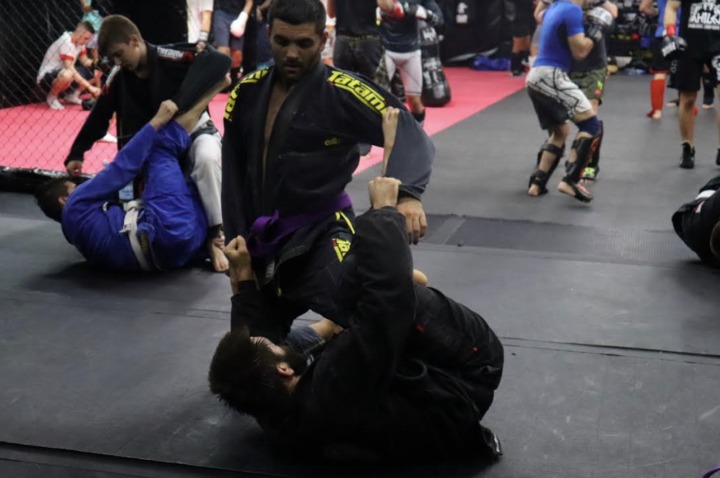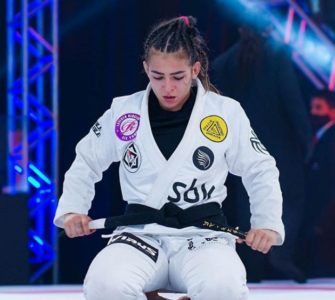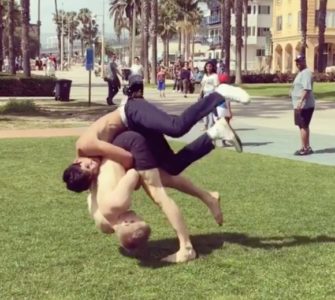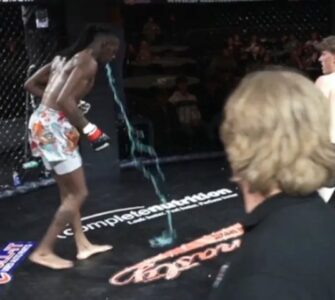Photo by Daria Kochetkova Photography. IG: Tebezvonu.
Gassing out on the mats at training, it happens. Especially when going from hard roll to hard roll with little rest. But in competition? This isn’t the time or place to have your gas tank hit empty! Burning lungs and jelly legs make finding that last-ditch effort to escape or find a submission near impossible. So, if you never want to gas in BJJ again, then you must implement these strategies below.
Do Less HIIT
I get it. You’ve been told for years that steady-state cardio will make you slow. That high-intensity interval training (HIIT) is the superior method to develop BJJ conditioning. Further, why slog through hours of cardio when a match only lasts 5-10 minutes?
You can drop these beliefs that are holding your BJJ cardio back. Steady-state cardio won’t make you slow if you aren’t performing endurance athlete volume and you’re performing speed and power exercises as part of your strength training.
And before you slam your laptop screen, HIIT is not superior to steady-state cardio and steady-state cardio is not superior to HIIT. They both serve different purposes and target different adaptations within the body.
The problem becomes when HIIT becomes the sole focus on the BJJ practitioner off the mats because matches are so short. But you are missing out on key aerobic adaptations you don’t get when performing HIIT.
For example, steady-state cardio will increase the size of your heart chamber so you can pool more blood between each heartbeat. Meaning you can pump more blood and deliver more oxygen to the working muscles with each heartbeat.
More oxygen means you predominantly use the aerobic energy system to supply energy when competing. This type of training will also raise the intensity in which you switch from predominantly aerobic processes to anaerobic processes to provide energy when on the mats.
So, you can push harder without suffering the effects of having blood lactate and the associated by-products build up within your muscles reducing your muscle’s ability to contract. But this only takes into account the adaptations to the heart, what about the rest of the body?
Keep Cardio As Specific As Possible
The first thing that comes to mind when thinking about cardio is the long road run. Name one combat sports/martial arts movie that doesn’t have a training montage filled with running! But this isn’t how to go about your steady-state cardio.
Other adaptations occur when performing low-intensity cardio such as increasing the muscles’ ability to use oxygen. So, if you spend most of your time on the road or stationary bike, the adaptations for the muscles to use more oxygen happen mainly within the muscles of the legs.
So even if you reduce your mile time, run a marathon, or cycle hundreds of miles a week, once you have to start grappling and predominately using the upper body muscles, you will find that these cardio modalities don’t transfer to the mats. So, what should you do instead?
BJJ.
If you are looking to improve your cardio, spend your time away from class performing partner BJJ drills 1 for 1, BJJ solo drills, or shadow wrestling. You can create circuits of exercises for variety and to kill the boredom that you’d endure if you sat on a bike. Here are the guidelines:
- Heart rate between 120-150 BPM for the entire session.
- 20-90 minutes in total. Start on the lower end.
- 1-3x per week depending on how often you are training BJJ.
- Solo drills and shadow wrestling if by yourself. Partner drill if you have a partner.
- Slow and steady pace.
Never Gas Out Again
Start to incorporate specific BJJ exercises within your conditioning to have better transfer from your cardio to your BJJ on the mats. This will transform how you feel on the mats with the bonus of drilling techniques when away from class. More exposure to these skills will equal better retention of techniques.
James de Lacey is a professional strength & conditioning coach that works with professional and international teams and athletes. He is a published scientific researcher and has completed his Master’s in Sport & Exercise Science. He currently owns and runs his combat sports website Sweet Science of Fighting.

















